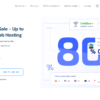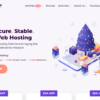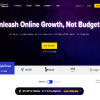

Building a website from scratch can be a daunting task, especially for those with little to no experience in web development. However, with the right guidance, anyone can go from zero to hero and create a stunning website that attracts and engages their target audience. In this comprehensive guide, we will walk you through the process of building a website from scratch, covering everything from planning and designing to launching and maintaining your online presence.
The process of building a website from scratch requires careful planning, attention to detail, and a willingness to learn. It’s essential to understand the basics of web development, including HTML, CSS, and JavaScript, as well as the principles of user experience (UX) and user interface (UI) design. With the numerous tools and resources available, it’s easier than ever to get started and create a website that reflects your brand and meets your business needs. Whether you’re a small business owner, entrepreneur, or individual looking to establish an online presence, this guide will provide you with the necessary steps to take your website from concept to launch.
Planning and Research: Laying the Foundation for Your Website
Before you start building your website, it’s essential to plan and research your project. This involves defining your target audience, identifying your competition, and determining the purpose and goals of your website. You should also develop a unique value proposition (UVP) that sets your website apart from others in your industry.
Additionally, you’ll need to choose a domain name, select a web hosting service, and decide on a content management system (CMS) or website builder. By taking the time to plan and research your website, you’ll be able to create a solid foundation for your online presence and ensure that your website meets the needs of your target audience.
When planning your website, it’s crucial to consider the user experience and how you can create a website that is intuitive, engaging, and easy to navigate. You should also think about the content you’ll be creating and how you can use it to attract and retain a clearly defined audience. By conducting thorough research and analyzing your competition, you can identify gaps in the market and create a website that fills those gaps and meets the needs of your target audience. With a well-planned website, you’ll be able to establish a strong online presence, drive traffic, and convert visitors into customers.
Designing Your Website: Creating a Visual Identity
Once you’ve planned and researched your website, it’s time to start designing your visual identity. This involves creating a logo, choosing a color scheme, and selecting typography that reflects your brand. You should also consider the layout and structure of your website, including the placement of navigation menus, headers, and footers. By creating a consistent visual identity, you’ll be able to establish a strong brand presence and make your website more recognizable to your target audience. When designing your website, it’s essential to consider the principles of UX and UI design, including simplicity, clarity, and consistency.
A well-designed website should be visually appealing, easy to navigate, and optimized for user experience. You should also consider the different devices and screen sizes that your website will be viewed on, including desktops, laptops, tablets, and mobile devices. By using responsive design techniques, you can create a website that adapts to different screen sizes and devices, ensuring that your website looks great and functions well across all platforms. With a well-designed website, you’ll be able to create a positive first impression, engage your target audience, and drive conversions.
Building Your Website: Choosing the Right Tools and Technologies
With your design in place, it’s time to start building your website. This involves choosing the right tools and technologies to bring your design to life. You’ll need to decide on a CMS or website builder, such as WordPress, Wix, or Squarespace, and select a theme or template that matches your design. You should also consider the different programming languages and technologies that will be used to build your website, including HTML, CSS, JavaScript, and PHP. By choosing the right tools and technologies, you’ll be able to create a website that is fast, secure, and scalable.
When building your website, it’s essential to consider the user experience and how you can create a website that is intuitive and easy to navigate. You should also think about the content you’ll be creating and how you can use it to attract and retain a clearly defined audience. By using a CMS or website builder, you’ll be able to create and manage content easily, without needing to write code. With the numerous plugins and extensions available, you can add functionality to your website, including contact forms, e-commerce functionality, and social media integration. By building a website that is fast, secure, and scalable, you’ll be able to establish a strong online presence and drive traffic to your website.
When it comes to building a website, there are many options to choose from, including custom development, CMS, and website builders. Each option has its pros and cons, and the right choice for you will depend on your budget, technical expertise, and business needs. By considering your options carefully and choosing the right tools and technologies, you’ll be able to create a website that meets your needs and helps you achieve your business goals.
Content Creation: Developing a Content Strategy
Once your website is built, it’s time to start creating content. This involves developing a content strategy that attracts and retains a clearly defined audience. You should consider the type of content you’ll be creating, including blog posts, articles, videos, and social media posts. You should also think about the tone and style of your content, including the voice, language, and formatting. By creating high-quality, engaging content, you’ll be able to attract and retain a clearly defined audience and drive traffic to your website.
When creating content, it’s essential to consider the user experience and how you can create content that is intuitive and easy to consume. You should also think about the keywords and phrases you’ll be targeting, including the meta title, meta description, and header tags. By optimizing your content for search engines, you’ll be able to improve your website’s visibility and drive organic traffic. With a well-planned content strategy, you’ll be able to create a website that attracts and engages your target audience, drives conversions, and establishes your brand as an authority in your industry.
A well-planned content strategy should include a mix of educational, informative, and entertaining content that resonates with your target audience. You should also consider the different formats and channels you’ll be using to reach your audience, including blog posts, social media, email newsletters, and video content. By creating a content calendar and scheduling your content in advance, you’ll be able to ensure consistency and save time. With a well-executed content strategy, you’ll be able to drive traffic, generate leads, and convert visitors into customers.
Launching and Maintaining Your Website: Ongoing Optimization and Improvement
Once your website is built and your content is created, it’s time to launch and maintain your website. This involves ongoing optimization and improvement, including monitoring your website’s performance, fixing technical issues, and updating your content regularly. You should also consider the different marketing channels you’ll be using to promote your website, including social media, email marketing, and paid advertising. By launching and maintaining a website that is fast, secure, and scalable, you’ll be able to establish a strong online presence and drive traffic to your website.
When launching and maintaining your website, it’s essential to consider the user experience and how you can create a website that is intuitive and easy to navigate. You should also think about the analytics and metrics you’ll be using to measure your website’s performance, including page views, bounce rate, and conversion rate. By using tools like Google Analytics, you’ll be able to track your website’s performance and make data-driven decisions to improve your website. With a well-planned launch and maintenance strategy, you’ll be able to drive traffic, generate leads, and convert visitors into customers.
A well-maintained website should be regularly updated with fresh content, including blog posts, articles, and social media posts. You should also consider the different security measures you’ll be taking to protect your website from hackers and malware, including SSL certificates, backups, and firewalls. By investing in ongoing optimization and improvement, you’ll be able to ensure that your website remains fast, secure, and scalable, and that your online presence continues to grow and evolve over time.
Conclusion: From Zero to Hero – Building a Website from Scratch
Building a website from scratch can be a challenging but rewarding experience. By following the steps outlined in this guide, you’ll be able to create a website that attracts and engages your target audience, drives conversions, and establishes your brand as an authority in your industry. Remember to plan and research your website carefully, design a visual identity that reflects your brand, build a website that is fast, secure, and scalable, create high-quality content that resonates with your target audience, and launch and maintain your website with ongoing optimization and improvement. With the right guidance and support, you can go from zero to hero and create a website that drives business results and helps you achieve your online goals.
By taking the time to plan, design, build, and maintain your website, you’ll be able to establish a strong online presence and drive traffic to your website. Remember to stay focused on the user experience and create a website that is intuitive, engaging, and easy to navigate. With the numerous tools and resources available, you’ll be able to create a website that reflects your brand and meets your business needs. Whether you’re a small business owner, entrepreneur, or individual looking to establish an online presence, this guide has provided you with the necessary steps to take your website from concept to launch.
In conclusion, building a website from scratch requires careful planning, attention to detail, and a willingness to learn. By following the steps outlined in this guide, you’ll be able to create a website that drives business results and helps you achieve your online goals. Remember to stay focused on the user experience, create high-quality content, and invest in ongoing optimization and improvement. With the right guidance and support, you can go from zero to hero and create a website that establishes your brand as an authority in your industry and drives traffic, generates leads, and converts visitors into customers.







